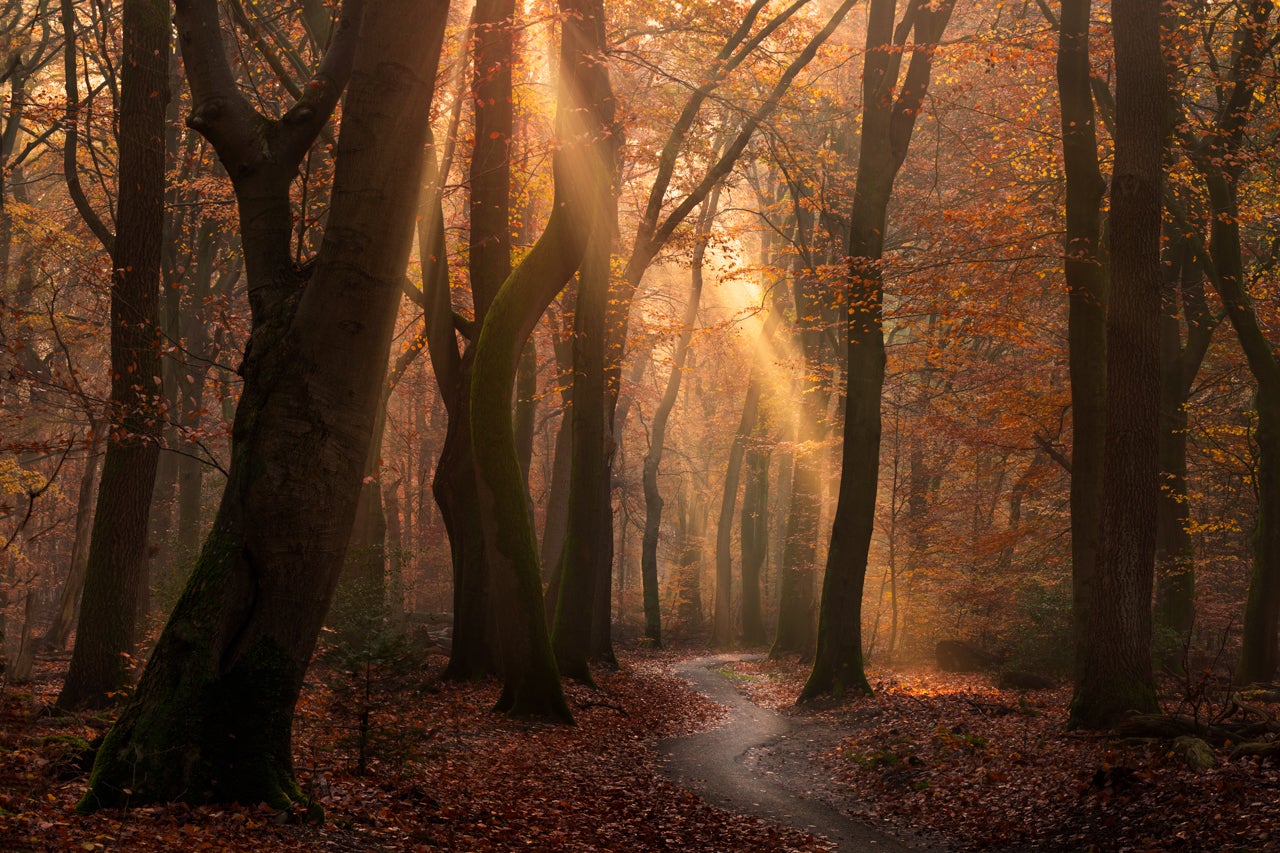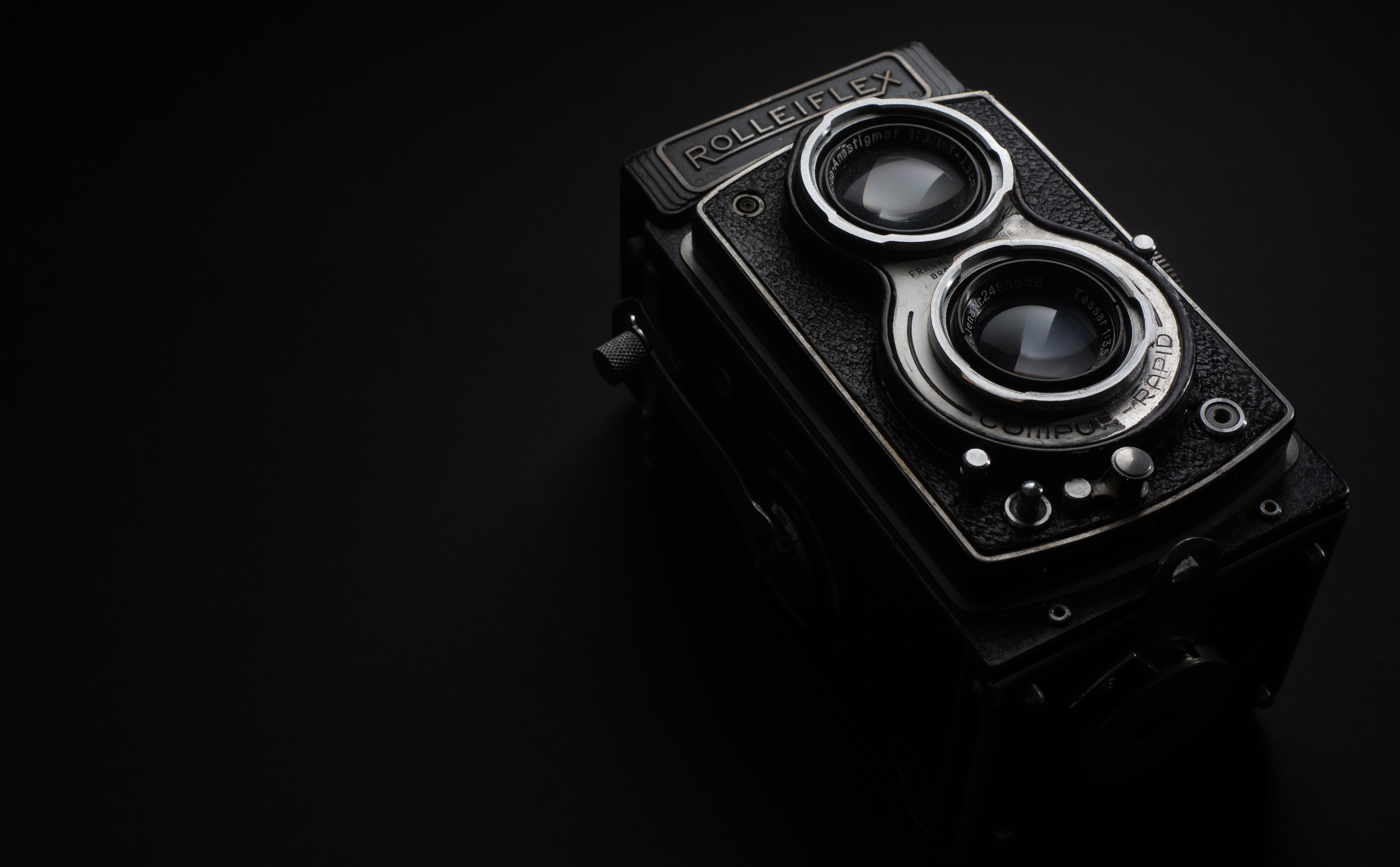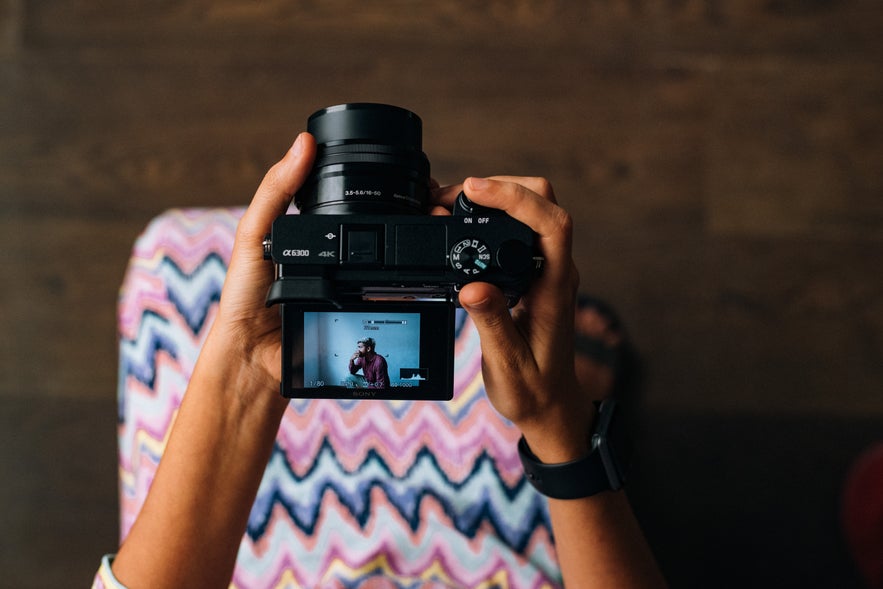
The digital revolution has been the biggest thing to hit the world of photography. Since the advancement of technology, digital photographers have been able to see the fruits of their labour without the need to spend time on processing film.
- Check out these Camera & Gear Reviews
- Discover The Best Camera Bags for 2020
- Join us on this 11 Day Iceland in Autumn Photography Workshop
Since the inception of the digital camera in 1975, a few different types of cameras have been created. So just what digital camera types are available and which is the best system for you? Let’s have a look.
 DSLRs are great all-round digital cameras for all photography fields. Photo by: 'Neil Thomas'.
DSLRs are great all-round digital cameras for all photography fields. Photo by: 'Neil Thomas'.
35mm or Small Format
The 35mm or small format camera types are built with sensors that are based on the single slide of 35mm photographic film. This film is used with SLR (Single Lens Reflex cameras), allowing the digitalisation of it to be classed as a DSLR.
DSLR
The DSLR is the digital version of the SLR (Single Lens Reflex) analogue film camera. For the last 15 years, the DSLR has been one of the most commonly used types of camera, due to its range of features and ability to produce professional image quality.
Although the first digital camera was developed by Kodak in the 1970s, it wasn’t until 1986 that Nikon revealed a digital camera that would be the basis of all DSLRs to come. Two years later, Nikon released the first commercial DSLR.
 The DSLR is the most commonly used digital camera. Photo by: 'James Sutton'.
The DSLR is the most commonly used digital camera. Photo by: 'James Sutton'.
There are a few things that make a DSLR what it is. Firstly, it uses a single, interchangeable lens. This allows you to capture any type of situation as long as the correct lens is used.
Secondly, there is a mechanical mirror system inside the camera body. A condenser lens and a pentaprism or pentamirror allow the photographer to see the light and scene via the viewfinder.
Photographers opt for DSLR models as they enable any scene to be focused manually or automatically. These cameras contain a range of settings, including (yet not exclusive to) Aperture and Shutter Priority modes. Typically, the more expensive camera systems have larger resolutions and more advanced technology.
There are two different types of DSLR cameras; full-frame and crop sensor. The only difference between them is the size of the image sensor. However, their size does have an immediate effect on your equipment and the settings that you will use. We will look at the idea of equivalence in a lot more depth in another article.
Full-Frame Sensor Camera
A full-frame sensor camera contains the largest type of camera sensor in the DSLR camera type. The size is akin to a single slide of 35mm photographic film. A full-frame sensor will give you images with better resolution compared to crop-sensor cameras.
Comparatively, the size of the sensor affects the quality and resolution of your images, thereby having an impact on detail. The bigger the sensor, the more pixels it can contain. This means that it will have a higher resolution. With a higher resolution, you’ll be able to capture better detail in the scene. As such, images produced using a full frame camera will often be sharper than with crop sensor versions.
When full frame cameras first emerged on the scene, they were too expensive for beginner or hobbyist photographers. This was one of the reasons why camera manufacturers developed crop sensor DSLRs. Crop sensor systems are also known as 35mm equivalent cameras, as the size of the sensor is modelled after the 35mm analogue film camera.
Two of the most popular full-frame cameras are the Canon 5D Mark IV or Nikon 850D.
Crop Sensor Camera
A crop sensor version of the DSLR is a camera with a sensor that is smaller than full-frame. There are a few different sizes of crop sensors. The most common are 23.6x15.7mm by Nikon and 22.2x14.8mm by Canon.
A smaller sensor means that there is less physical space for pixels. Fewer pixels means lower resolution. As such, professional photographers tend to use full-frame camera systems when they want to achieve higher quality images.
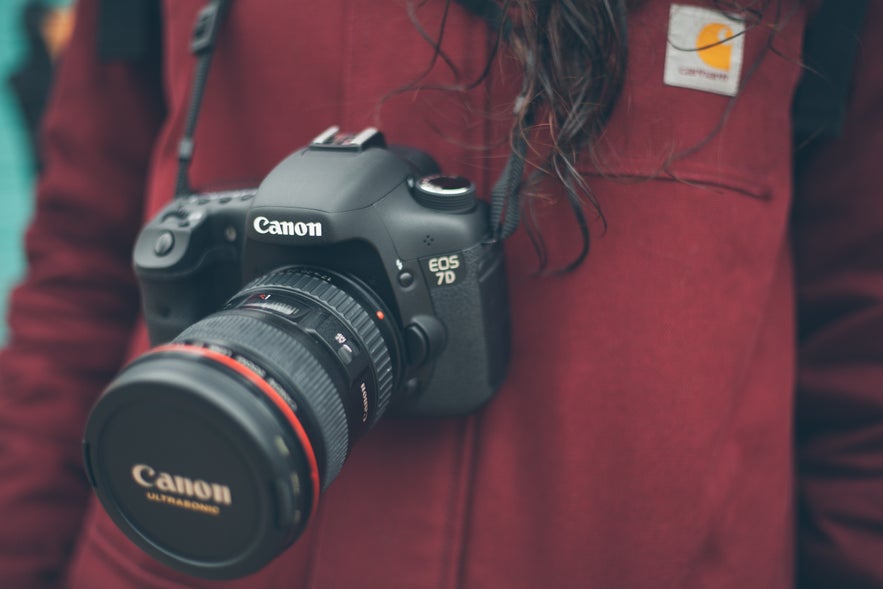 The Canon 7D is a top of the line crop sensor DSLR. Photo by: 'Mario Calvo'.
The Canon 7D is a top of the line crop sensor DSLR. Photo by: 'Mario Calvo'.
One of the problems associated with using a crop sensor camera is that the lenses you use may differ from their original focal length. The focal length numbers on a lens are for full-frame sensors, unless they have been specifically designed for the crop version.
For example, a 50mm full-frame lens on a crop sensor camera body will be equivalent to 75mm for Nikon systems and 80mm for Canon. The extra length is great for applications such as wildlife photography, particularly when you don’t have the funds to invest in a telephoto lens. This is one of the reasons why beginners and enthusiasts usually opt for the crop sensor version.
If you’re looking for a crop sensor camera, then we recommend the Canon 90D or the Nikon D3500.
- See also: A Brief History of Photography
Mirrorless
The arrival of mirrorless interchangeable lens cameras has shaken many photographers from their DSLR systems. These cameras first appeared in 2004 but it wasn’t until 2012 that they really started to take shape.
When the Fujifilm X-Pro1 was released, it became the first mirrorless camera with a built-in optical viewfinder. As this camera grew in popularity, other DSLR camera companies saw the importance of this new technology.
 The Sony mirrorless system. Photo by: 'Markus Lompa'.
The Sony mirrorless system. Photo by: 'Markus Lompa'.
What makes these camera systems different is the lack of a mirror inside the camera. Without the need for a mirror, the design of these cameras could be made smaller without any significant loss of resolution or features.
As they don’t rely on constant mirror flip when making an exposure, mirrorless cameras may be described as truly silent. The lack of sound produced when taking an image is very helpful in event and wedding photography, as well as for sports where sound may be an issue. These days, photographers can capture candid scenes with much more stealth while conducting street photography or photojournalism.
Mirrorless cameras are also subject to full-frame and crop sensor versions, where the latter is often cheaper due to a smaller sensor and subsequent lesser number of pixels..
The Sony a7R IV is a popular mirrorless camera alongside the Canon R and Nikon Z7.
Medium Format
Medium format camera types have a sensor that is bigger than 35mm small format cameras, yet smaller than large format cameras. Due to the size of the film used, these cameras have the capacity to capture much more detail than smaller systems.
There are two different types of medium format camera that can capture a digital image. The first is a dedicated digital medium format camera, while the second is a medium format film camera with a digital back.
Digital medium format cameras are the digital versions of the medium format camera model, This means that they come with a sensor size larger than the 36x24mm size used by small-format cameras. However, they do not surpass the 130x100mm sensor size often found in large format photography cameras.
These types of cameras have predominantly been used by professionals in well-paid photography genres. Fashion, commercial, portraiture and product photography requires images with larger resolutions. Subsequently, they are a few of the fields where medium format photography has really been able to shine.
Medium format cameras are expensive compared to small format camera models, yet cheaper than the large format. A modern digital medium format camera, such as the GFX 50, will set you back around $4,500.
The other option is to use an analogue medium format camera with a digital back. Some medium format cameras, like the Hasselblad 500C/M, allow photographers to interchange the back. Here, a digital sensor is able to be added which will allow you to take a digital image.
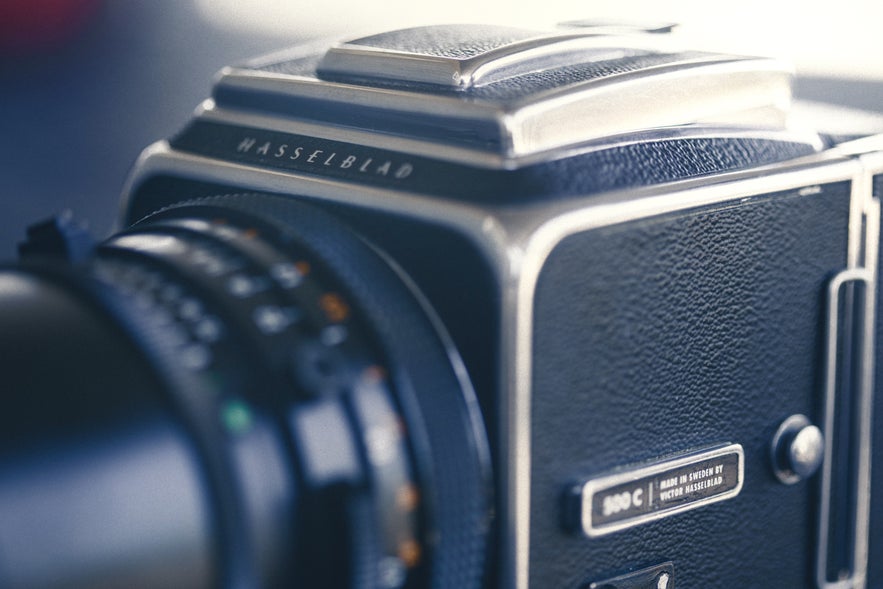 A medium format camera offers very large resolutions. Photo by: 'Donald Giannatti'.
A medium format camera offers very large resolutions. Photo by: 'Donald Giannatti'.
In the beginning, the digital sensors of these specialised backs were smaller than those found in DSLR cameras. They also needed a tethered connection in order to record and store the digital images. This made it difficult for impromptu photo shoots or to use the camera outside of the photo studio.
Although they may be cumbersome, photographers still use digital backs with large format cameras for product photography. The unsurpassable detail and resolution are needed for large, billboard advertising campaigns. Digital backs across medium and large formats continue to be beneficial, as they allow the photographer to shoot both digital and film photography from the same system.
Digital medium format cameras are the route that photographers take when a larger resolution is required. The largest sensor on a typical DSLR is 50MP on the Canon EOS 5DSR. For mirrorless cameras, it is 61MP on the Sony A7R IV. With digital medium format cameras, the PhaseOne XF IQ4 offers a whopping 151MP with a price tag to match.
Compact / Point and Shoot
In some circumstances, a DSLR may be too complex for the purpose of photography. They have many settings, dials and wheels. Some people just want to record the moment. Similarly, these types of cameras are weighty, hefty and expensive.
This is where compact cameras or ‘point and shoot’ systems come in. These are great cameras for many reasons. They fit in your pocket, weigh much less than DSLR cameras and allow you to shoot fully automatic. This means that you won’t have to mess around with settings, so you’ll be less likely to miss the moment.
Some of these types of camera allow you to interchange lenses. While many won’t find an optical viewfinder, an LCD screen comes as standard, along with a built-in flash.
Compact cameras can come in two varieties; zoom or advanced. As the name suggests, a zoom compact camera has the capacity to offer a very powerful zoom. This allows the user to magnify their scene, reaching distances other compact cameras can’t. Typically, they start at 24mm and can reach up to 360mm, as with the Lumix ZS200/TZ200.
You can expect compact cameras to have a resolution of around 12MP, which is more than enough for printing travel images and family portraits at a large size. While you may not find them in the hands of professional fashion photographers, they are perfect for everyday shooting.
 A compact camera is a very useful companion on your travel photography. Photo by: 'Jim Varga'.
A compact camera is a very useful companion on your travel photography. Photo by: 'Jim Varga'.
Advanced compact cameras offer the photographer more control over a regular point and shoot. With these, you can use manual shooting modes to tap into more realistic exposures or to achieve tighter focus within a scene.
The Fujifilm X100F is a perfect example of an advanced compact camera.
- See also: Best Cameras for Beginners in 2020
360° Cameras
360° cameras have always been out of the mainstream when it comes to digital cameras. They are like the silent kid in the class, listening and waiting patiently for their time to shine. These cameras are great for vloggers across the globe and are strong contenders within the digital photography world.
These types of camera are very niche as there isn’t a huge demand for showing off scenes with a wide-angle field of view. However, they capture panoramic images in a heartbeat and allow you to easily create those famed ‘tiny planet’ effects. By capturing a large field of view, you will be able to edit the scene down to what you find most important.
 Small planet image showing St. Stephen’s Basilica in Budapest. Photo by: 'Elio Santos'.
Small planet image showing St. Stephen’s Basilica in Budapest. Photo by: 'Elio Santos'.
360° cameras allow you to film in the same manner. Many of them offer image stabilisation and allow for the recording of 4K video (ok, so not exactly the same as the 4K on DSLRs). They are easy to use and the images or videos may be shared quickly. This means that your family back home can see your holiday scenes almost as they happen.
- See also: Ultimate Guide to Time Lapse Photography
Action / Adventure
Can you imagine wearing a DSLR as you weave in and out of trees off-piste? Neither can we. However, it’s one of the reasons why adventure or action cameras first came into existence.
These lightweight and tiny systems are built with sport, action and adventure in mind. Shock absorption, weatherproofing and even waterproofing are a few features that set these types of cameras apart from DSLRs. They are small and light enough to wear. In addition, some can even be controlled from a watch-like remote or camera.
 GoPro’s are the perfect choice in action photography. Photo by: 'Sai Praveen'.
GoPro’s are the perfect choice in action photography. Photo by: 'Sai Praveen'.
You won’t be able to change the lenses and they won’t have nearly as many options or settings when it comes to shooting. However, these cameras are mainly automatic, meaning that they are easier to use. One button does it all and with just a few clicks, you can shoot hyperlapses and 4K video footage.
Most models of action or adventure cameras won’t have an LCD screen. They also aren’t usually used by professionals, as the wide-angle lens can result in substantial distortion. However, these cameras are popular with travellers due to their pocketable size. Personally, I use them for recording live music on stage.
We recommend the GoPro Hero 7 for all adventure photography.
- See also: Travel Photography Explained
Conclusion
There is a reason why there are many different types of cameras on the market. Each one serves a purpose for a specific situation. A compact camera won’t bring out the best details in sports photography, while a DSLR might be too much for an unscheduled family portrait by the beach. DSLR and mirrorless systems may be more versatile but they won’t let you capture 360° unless you have the time and money to invest in specialist lenses and editing skills. For peace of mind and full automatic control, a compact camera may be your best bet. However, you will be trading quality and resolution for ease of use.
Finding the right camera for you will depend upon what you want to achieve. A digital camera has a higher initial cost, yet it is cheaper in the long run. This is down to not having to purchase camera film or chemicals for processing. A film camera may be a much slower way to photograph, though some photographers prefer to have the time to think about each shot. Although these types of camera are the cheaper option, you’ll need to spend more time processing and developing to achieve a final image.
Whatever your initial decision, don’t be surprised that you might not fall in love with your first choice of camera. It might take a few different systems before you find the one that is perfect for you.
About the author: Craig Hull is a freelance photographer and videographer based in Eastern Europe. You can find more of his work on his website or by following him on Facebook and Twitter.
What kind of camera do you use for photography? What were the reasons that went into your decision-making process when choosing that type of camera? Share your thoughts by leaving a comment below!


